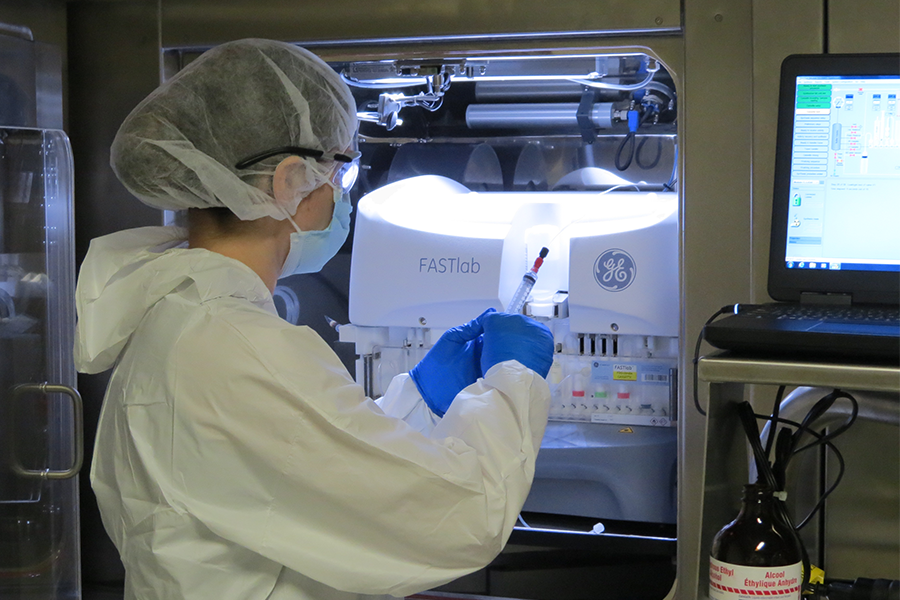
Cyclotron giving medical imaging a boost
It has been a long road from conception to completion for the team working to get the cyclotron at the Saskatchewan Centre for Cyclotron Sciences producing medical-grade isotopes-but in early June that first batch was delivered to the Royal University Hospital (RUH).
By University Communications“As the distance to our neighbouring large cities is quite large, and the issue with radio isotopes is that they break down over time—they decay,” explained Dr. Paul Babyn, head of medical imaging at the College of Medicine, and a member of the team that helped bring medical isotope production to Saskatchewan. “The most common radioisotope that we use, which is Flourine-18, has a half-life of 110 minutes which means that after just less than two hours 50 per cent of what you started with is gone.
“And the issue is that you can make a lot, but by the time it gets here from somewhere else you only have a little bit—and that limits the number of patients you can image each day.”
And that’s a big deal for nuclear medicine, because up until recently Saskatoon Health Region needed to ship isotopes from Hamilton, Ont., which is over 2,200km from Saskatoon. And starting to supply the isotopes in-house was important before the cyclotron in Hamilton, at McMaster University, sees their demand for medical isotopes increase as the Chalk River reactor in Ontario is slated to close in 2018.
And while the cyclotron in Saskatoon, operated by the Sylvia Fedoruk Canadian Center for Nuclear Innovation, has been producing radioisotopes for several months now, last month was the first production of F18- Fluorodeoxyglucose—the radiopharmaceutical most needed for PET imaging at RUH.
See more on the College of Medicine website.

